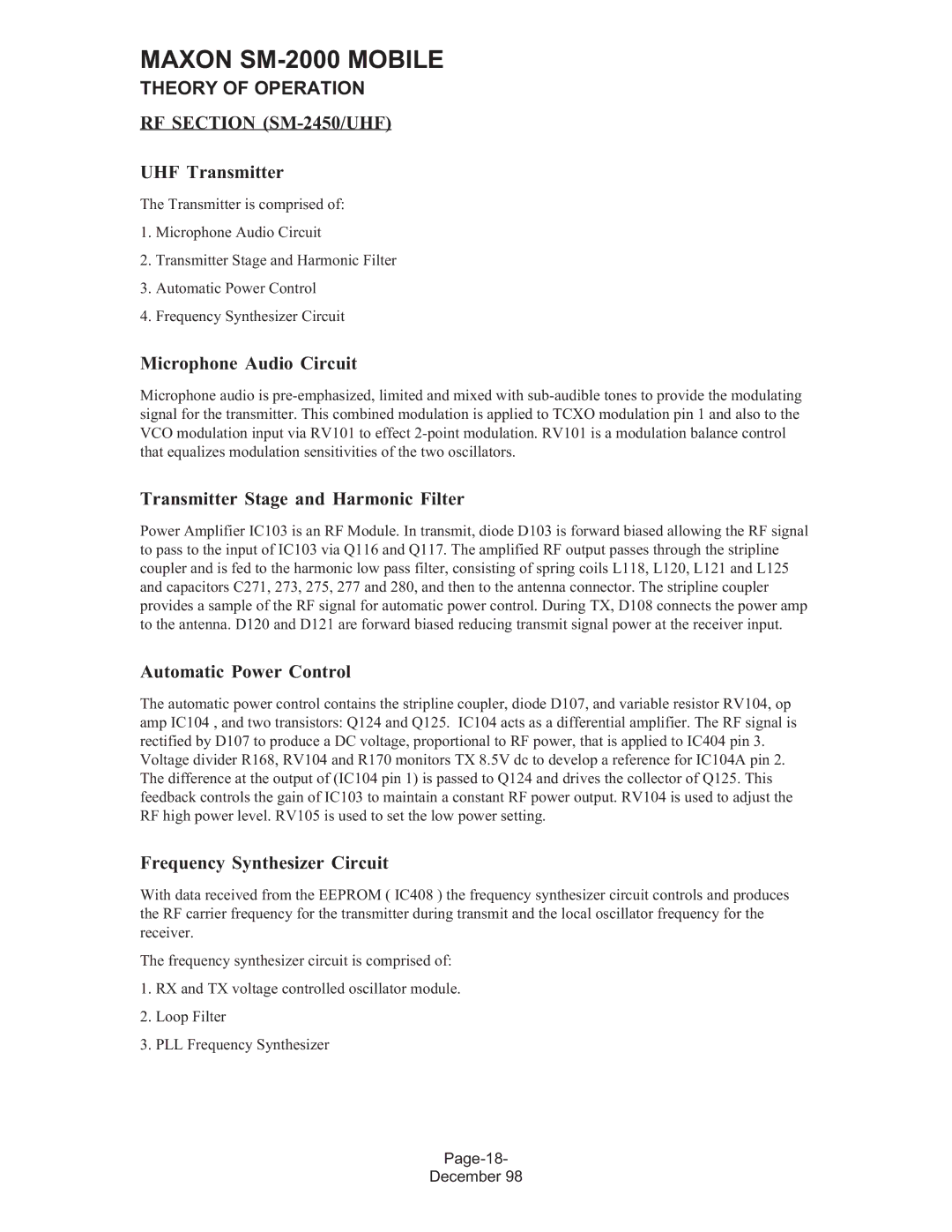MAXON SM-2000 MOBILE
THEORY OF OPERATION
RF SECTION (SM-2450/UHF)
UHF Transmitter
The Transmitter is comprised of:
1.Microphone Audio Circuit
2.Transmitter Stage and Harmonic Filter
3.Automatic Power Control
4.Frequency Synthesizer Circuit
Microphone Audio Circuit
Microphone audio is
Transmitter Stage and Harmonic Filter
Power Amplifier IC103 is an RF Module. In transmit, diode D103 is forward biased allowing the RF signal to pass to the input of IC103 via Q116 and Q117. The amplified RF output passes through the stripline coupler and is fed to the harmonic low pass filter, consisting of spring coils L118, L120, L121 and L125 and capacitors C271, 273, 275, 277 and 280, and then to the antenna connector. The stripline coupler provides a sample of the RF signal for automatic power control. During TX, D108 connects the power amp to the antenna. D120 and D121 are forward biased reducing transmit signal power at the receiver input.
Automatic Power Control
The automatic power control contains the stripline coupler, diode D107, and variable resistor RV104, op amp IC104 , and two transistors: Q124 and Q125. IC104 acts as a differential amplifier. The RF signal is rectified by D107 to produce a DC voltage, proportional to RF power, that is applied to IC404 pin 3.
Voltage divider R168, RV104 and R170 monitors TX 8.5V dc to develop a reference for IC104A pin 2. The difference at the output of (IC104 pin 1) is passed to Q124 and drives the collector of Q125. This feedback controls the gain of IC103 to maintain a constant RF power output. RV104 is used to adjust the RF high power level. RV105 is used to set the low power setting.
Frequency Synthesizer Circuit
With data received from the EEPROM ( IC408 ) the frequency synthesizer circuit controls and produces the RF carrier frequency for the transmitter during transmit and the local oscillator frequency for the receiver.
The frequency synthesizer circuit is comprised of:
1.RX and TX voltage controlled oscillator module.
2.Loop Filter
3.PLL Frequency Synthesizer
December 98
